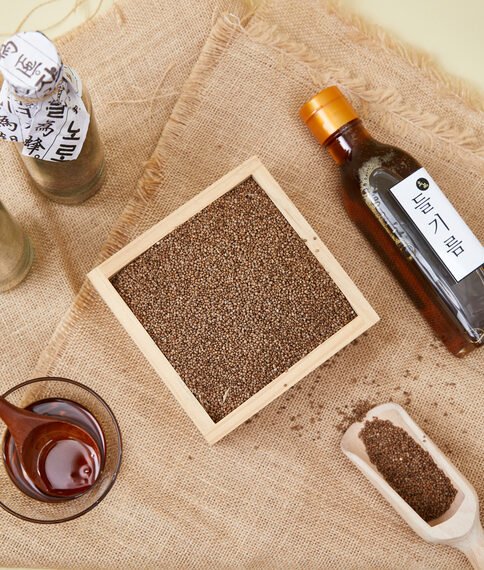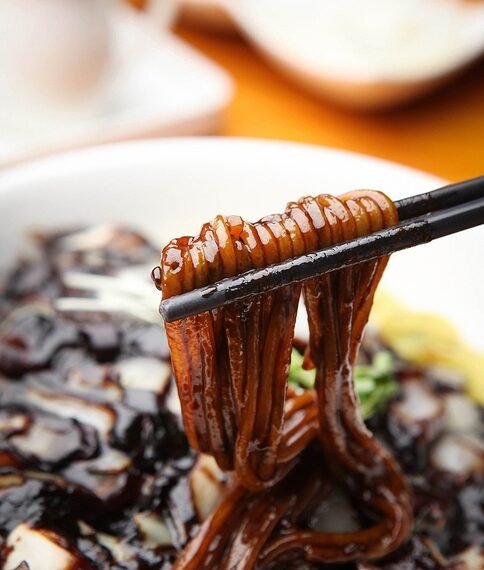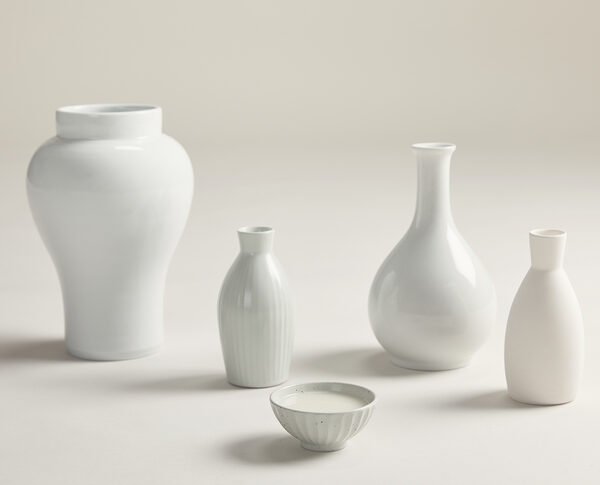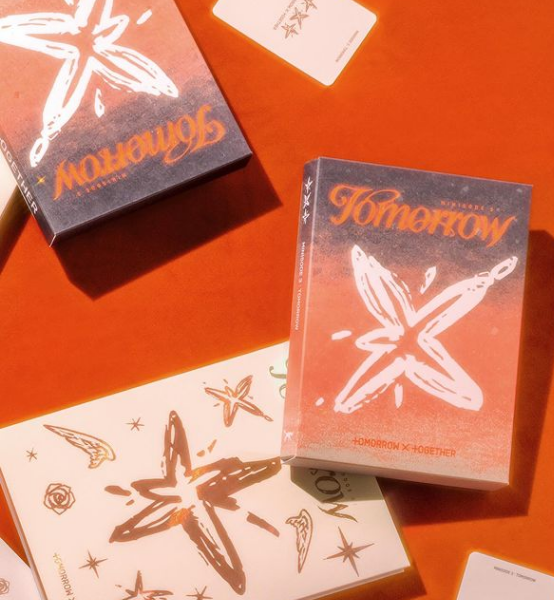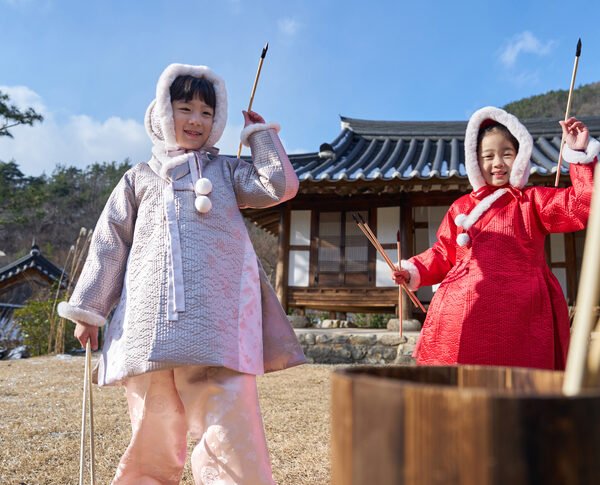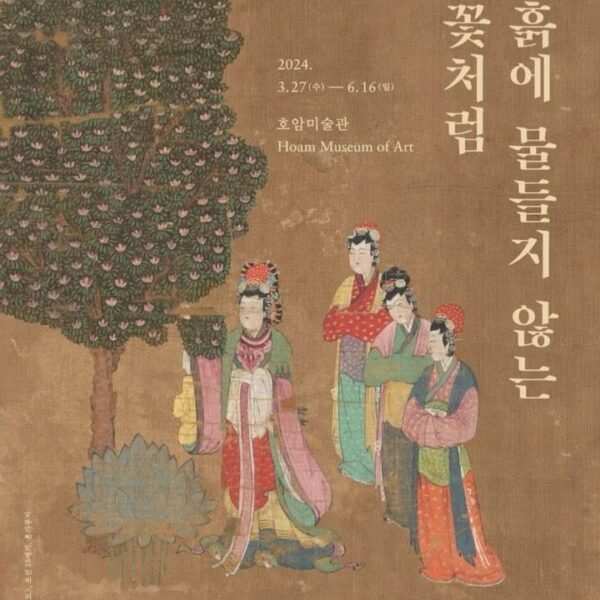Indulge in the comforting flavors and rich traditions of Korean cuisine with the beloved Tteokguk, a traditional rice cake soup often enjoyed during New Year’s celebrations. Bursting with delicious sliced rice cakes known as garaetteok, this classic dish combines the heartiness of beef broth with the delectable texture of rice cakes. For a delightful twist, add mandu (Korean dumplings) to create tteok-manduguk. Discover the art of making flavorful broth by simmering beef with aromatic vegetables, and enhance your tteokguk with tips such as using soup soy sauce for seasoning and garnishing it with jidan, an egg crepe. With this recipe’s helpful step-by-step instructions, including a quicker method for preparing beef broth, you’ll be able to experience the authentic taste of Tteokguk in no time.
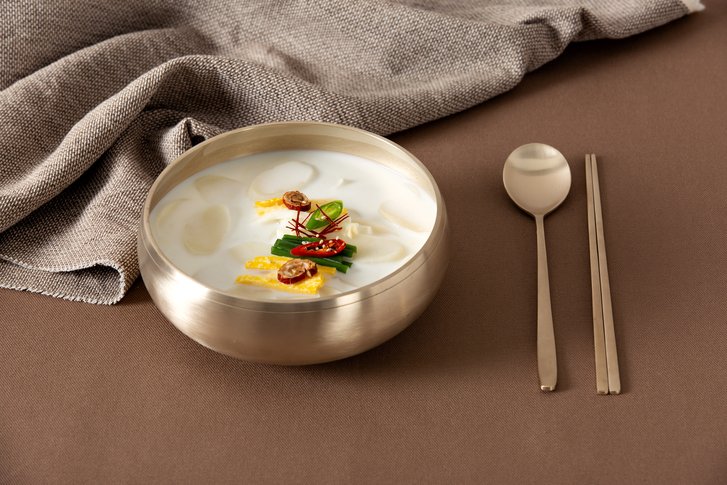
Ingredients
Sliced rice cakes (garaetteok)
Tteokguk is a traditional Korean rice cake soup that incorporates sliced rice cakes, known as garaetteok. These rice cakes are typically unsweetened and have a cylindrical shape, resembling long tubes. They provide a unique texture to the soup and are a key component of this delicious dish.
Beef broth
The base of tteokguk is often a flavorful beef broth. This broth is made by boiling beef with aromatic vegetables, resulting in a rich and savory liquid that enhances the overall taste of the soup. The beef broth adds depth and richness to the dish, making it even more satisfying.
Mandu (Korean dumplings)
Another common ingredient in tteokguk is mandu, which are Korean dumplings. These dumplings are often filled with a combination of meat and vegetables, providing a burst of flavor and a delightful texture to the soup. The addition of mandu transforms the tteokguk into tteok-manduguk, adding an extra layer of deliciousness.
Soup soy sauce
To season the tteokguk, soup soy sauce is commonly used. This type of soy sauce has a milder flavor and is specifically designed for use in soups and stews. It adds depth and umami to the soup without overpowering the other ingredients. It is the perfect seasoning to enhance the overall taste of the tteokguk.
Aromatic vegetables for beef broth
To create a flavorful beef broth, aromatic vegetables are essential. Common vegetables used in this process include onions, garlic, and ginger. These vegetables add a fragrant aroma and enhance the overall taste of the broth. They infuse the soup with their natural flavors, making it even more delicious.
Egg crepe (jidan)
Tteokguk is often garnished with an egg crepe, known as jidan. Jidan is made by beating eggs and cooking them into a thin sheet. Once cooked, the jidan is sliced into thin strips and added to the soup as a decorative garnish. It adds visual appeal to the dish and provides an extra layer of flavor and texture.
Other optional garnishes
In addition to the egg crepe, there are various other garnishes that can be added to tteokguk according to personal preference. Some popular choices include green onions, sesame oil, roasted sesame seeds, and red pepper flakes. These garnishes add additional flavors and textures, allowing for a customized tteokguk experience.
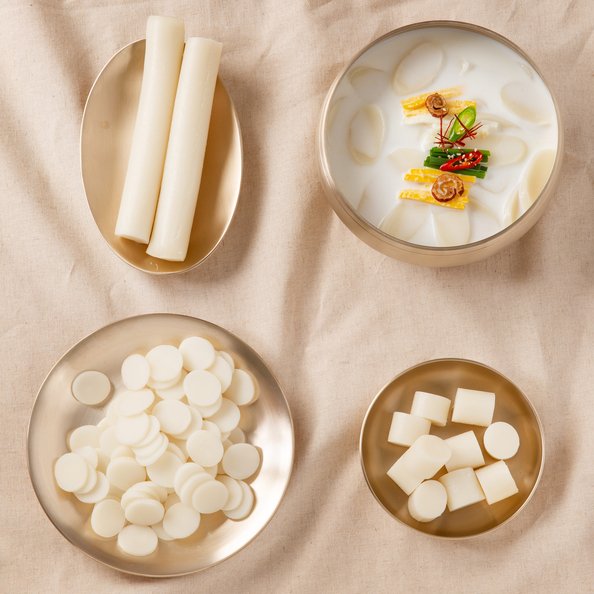
Preparation
Soaking the rice cakes
Before incorporating the rice cakes into the soup, it is important to soak them in water. This process softens the rice cakes, allowing them to cook evenly and achieve the desired texture. Soaking the rice cakes for approximately 30 minutes ensures that they are ready to be added to the soup when the time comes.
Preparing the beef broth
To make the beef broth, start by placing beef in a pot of water along with the aromatic vegetables such as onions, garlic, and ginger. Allow the mixture to come to a boil, then reduce the heat and let it simmer for several hours. This slow cooking process allows the flavors to develop and infuse into the broth, resulting in a flavorful base for the tteokguk.
Cooking the mandu
If including mandu in the tteokguk, they will need to be cooked separately before being added to the soup. Follow the instructions on the packaging for the specific type of mandu being used. Generally, they can be boiled or pan-fried. Once cooked, set the mandu aside until it’s time to add them to the soup.
Making the egg crepe (jidan)
To make the egg crepe, beat eggs in a bowl until well-mixed. Heat a non-stick skillet over medium heat and pour a thin layer of the beaten eggs onto the skillet, tilting the pan to ensure an even layer. Cook until the eggs are set and no longer runny, then carefully flip the crepe and cook for a few more seconds. Transfer the crepe to a cutting board and slice it into thin strips. The jidan is now ready to be added as a garnish to the tteokguk.
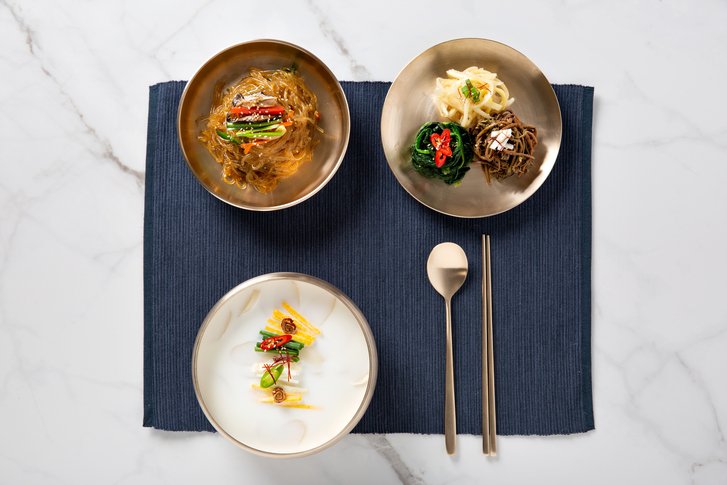
Cooking Instructions
Step 1: Boiling the beef broth
Start by bringing a pot of water to a boil. Once the water is boiling, add the beef and aromatic vegetables such as onions, garlic, and ginger. Reduce the heat to low and let the mixture simmer for at least two hours, or until the beef is tender and the flavors have melded together. Skim off any impurities that rise to the surface during the simmering process.
Step 2: Soaking the rice cakes
While the beef broth is simmering, prepare the rice cakes by soaking them in a bowl of water for approximately 30 minutes. This softens the rice cakes and ensures they cook evenly in the soup.
Step 3: Cooking the sliced rice cakes
After the rice cakes have soaked, drain the water and add them to the boiling beef broth. Cook the rice cakes for about 5 minutes, or until they become soft and chewy. The exact cooking time may vary depending on the thickness of the rice cakes, so it’s important to keep an eye on them to prevent overcooking.
Step 4: Adding the mandu
If you’re including mandu in your tteokguk, add them to the soup after the rice cakes have cooked. The cooking time for the mandu will vary depending on the type and size of the dumplings. Follow the instructions on the packaging for the specific cooking method and time. Once the mandu are cooked, they can be added to the soup.
Step 5: Seasoning the soup
Now it’s time to season the tteokguk. Add soup soy sauce to the pot, starting with a small amount and adding more to taste. The soup soy sauce adds a savory flavor to the tteokguk without overwhelming the other ingredients. Adjust the seasoning with salt and pepper if desired.
Step 6: Garnishing and serving
To complete the tteokguk, garnish it with your choice of toppings. Thinly sliced green onions, a drizzle of sesame oil, a sprinkle of roasted sesame seeds, and a pinch of red pepper flakes are all common garnishes. Additionally, add the egg crepe (jidan) strips for a decorative touch. Serve the tteokguk hot and enjoy!
Variations
Vegetarian Tteokguk
For those who prefer a vegetarian option, it is possible to make tteokguk without beef. Instead of using beef broth, vegetable broth can be substituted. The remaining ingredients and cooking process remain the same, resulting in a flavorful and satisfying vegetarian version of this traditional Korean rice cake soup.
Seafood Tteokguk
Seafood lovers can enjoy a delicious variation of tteokguk by incorporating various types of seafood into the soup. Adding shrimp, clams, or fish cake slices can elevate the flavors and provide a delightful seafood twist to the dish. Simply substitute the beef broth with seafood broth, or combine it with the beef broth for a rich and flavorful combination.
Spicy Tteokguk
If you prefer a spicy kick, consider making a spicy tteokguk. To achieve the desired level of spice, add gochujang (Korean red pepper paste) or gochugaru (Korean red pepper flakes) to the soup. Adjust the amount according to your personal preference and spice tolerance. The spicy tteokguk adds an extra dimension of flavor and heat to the traditional dish.

Tips for Making Tteokguk
Making a quicker beef broth
Although simmering the beef broth for several hours is the traditional method, it can be time-consuming. If you’re short on time, a quicker alternative is to use store-bought beef broth or bouillon cubes. While it may not have the same depth of flavor as homemade broth, it can still yield delicious results in a fraction of the time.
Using soup soy sauce for seasoning
When seasoning tteokguk, opt for soup soy sauce instead of regular soy sauce. Soup soy sauce has a milder and less salty flavor profile, making it the perfect choice for enhancing the soup without overpowering the other ingredients. If you don’t have soup soy sauce, you can dilute regular soy sauce with water to achieve a similar effect.
Adding mandu to the soup
Mandu adds an extra layer of flavor and texture to tteokguk. If you prefer your mandu to have a softer texture, consider adding them directly to the soup during the cooking process. This allows the mandu to absorb the flavors of the broth and become tender. On the other hand, if you prefer a crispy texture, you can pan-fry the mandu separately and add them to the soup just before serving.
Creating a decorative egg crepe (jidan)
To make the jidan more visually appealing, you can create patterns on the egg crepe by using different colored liquids or adding ingredients like vegetables or herbs before cooking. For example, you can add finely chopped green onions or red bell peppers to the beaten eggs for a vibrant and decorative jidan. This adds an extra touch of creativity and beauty to the tteokguk.
Health Benefits
Good source of carbohydrates
Tteokguk is a dish that primarily consists of rice cakes, which are a good source of carbohydrates. Carbohydrates provide the body with energy and are an essential part of a balanced diet. Consuming tteokguk can help sustain energy levels throughout the day and contribute to overall well-being.
Protein-rich with beef or mandu
If you choose to include beef or mandu in your tteokguk, it becomes a protein-rich meal. Protein is an essential macronutrient that plays a crucial role in various bodily functions, including muscle repair, growth, and hormone production. By incorporating protein into your tteokguk, you can enjoy a well-rounded and nutritious meal.
Nutrition from vegetables and eggs
Tteokguk often incorporates aromatic vegetables, such as onions, garlic, and ginger, which provide a range of essential nutrients. These vegetables are rich in vitamins, minerals, and antioxidants, contributing to overall health and well-being. Additionally, the egg crepe (jidan) adds protein, vitamins, and minerals to the dish, making tteokguk a nutritious meal option.
Traditions and Significance
New Year’s celebration
Tteokguk holds significant cultural importance in Korea, especially during New Year’s celebrations. It is customary to eat tteokguk on New Year’s Day as it is believed to bring luck and good fortune for the year ahead. The round shape of the rice cakes symbolizes the cycle of life and the hope for a prosperous future.
Symbolizing luck and prosperity
In Korean culture, tteokguk is often associated with luck and prosperity. It is believed that consuming tteokguk on New Year’s Day can grant one year of age and bring good fortune. The long, cylindrical shape of the rice cakes symbolizes a long life, while their whiteness represents purity and new beginnings.
Serving and eating etiquette
When serving tteokguk during New Year’s celebrations, it is customary to offer it to the eldest members of the family first. This gesture is a sign of respect and signifies the passing of wisdom and blessings from the older generation to the younger generation. It is also common to bow before eating the tteokguk as a sign of gratitude and appreciation.
History of Tteokguk
Ancient origins
Tteokguk dates back to ancient times in Korea and has been enjoyed for centuries. It is believed to have originated during the Three Kingdoms period, which lasted from 57 BC to 668 AD. At that time, tteokguk was primarily consumed during rituals and festivities, symbolizing the hope for a prosperous harvest and a plentiful year.
Evolution of the dish over time
As time passed, tteokguk evolved and became a more common dish consumed by people of all social classes. The ingredients and cooking methods varied depending on the region and the availability of resources. Today, tteokguk has become an integral part of Korean cuisine and holds cultural significance, especially during celebratory occasions.
Popular Tteokguk Customs
Seollal (Korean Lunar New Year)
Seollal, or Korean Lunar New Year, is the most significant occasion for enjoying tteokguk. Families gather together to celebrate the new year and honor their ancestors. Tteokguk is a staple dish during this time, and it is believed that eating it will bring good luck and success for the coming year.
Beoljip (Rice Cake House)
Leading up to the Korean Lunar New Year, rice cake houses, known as beoljip, become popular. These temporary structures are set up and specialize in producing and selling freshly made rice cakes. People visit the beoljip to purchase the necessary ingredients for tteokguk and other rice cake dishes, ensuring that they can enjoy traditional Korean cuisine during the festive season.
Jeongwol Daeboreum (First Full Moon Festival)
Jeongwol Daeboreum is a festival celebrated on the first full moon of the lunar calendar year. During this festival, tteokguk is often enjoyed as a symbol of good fortune and a wish for a year filled with health and happiness. Traditional activities such as guessing games and outdoor events are also a part of the festival celebrations.
Conclusion
In conclusion, tteokguk is a traditional Korean rice cake soup that has a long history and cultural significance in Korea. This versatile dish can be enjoyed throughout the year but holds special importance during New Year’s celebrations. With its variety of ingredients, including sliced rice cakes, beef broth, mandu, and various garnishes, tteokguk offers a delicious and comforting meal option.
By following the step-by-step instructions provided, you can easily make tteokguk at home and customize it to your liking. Whether you prefer a vegetarian option, seafood twist, or a spicy kick, there are various variations to suit your taste preferences. Tteokguk is not only delicious but also provides health benefits through its carbohydrate content, protein from beef or mandu, and the nutrition derived from vegetables and eggs.
Furthermore, tteokguk carries significant cultural and historical value. It symbolizes luck, prosperity, and new beginnings, making it a must-have dish during New Year’s celebrations. Additionally, the serving and eating etiquette associated with tteokguk reflects Korean traditions and the importance of respecting elders.
No matter the occasion or time of year, tteokguk is a dish that brings people together and celebrates Korean culture. Its rich history, delicious flavors, and versatile nature make it a beloved tradition in Korean cuisine. So why not try making a batch of tteokguk and experience the taste and cultural significance of this delightful rice cake soup?


